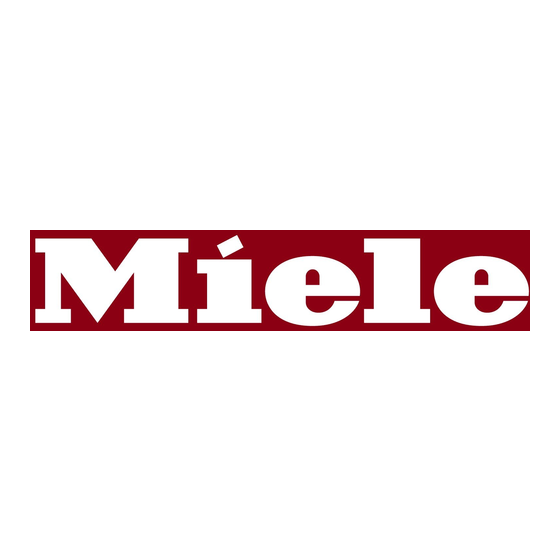Miele Dishwasher Cuidado y mantenimiento - Página 13
Navegue en línea o descargue pdf Cuidado y mantenimiento para Lavavajillas Miele Dishwasher. Miele Dishwasher 44 páginas.

3.0 Dishwasher load
3.1 General information
The dishwasher load can be divided into two broad groups.
1. Items for food preparation:
Aluminum, steel (pot, pans), oven-proof dishes (casserole
dishes), etc.
2. Items for food consumption:
Porcelain, glass, silver and stainless steel cutlery, etc.
3.2 Glass
Glass with its many favorable properties (transparency, refraction, reflection,
shine, water-imperviousness, taste- and odor-neutrality, chemical
resistance) is a material frequently used in the home for equipment for food
and drink preparation and consumption.
From a chemical standpoint glass is a fusion of inorganic metal oxides.
Glass is manufactured by smelting sand and various alkaline and earth-
alkaline compounds together at 2700 – 3200°F. Glass has no fixed defined
crystalline structure, as physically it is a super-viscous liquid.
Glass items of the most varying qualities are frequently washed together in
the dishwasher so it is not surprising that varying levels of glass corrosion
may become apparent at different times. Cheap glasses may show signs of
corrosion after less than 100 wash cycles while others declared as
dishwasher-proof have often survived for more than 1000 washes in
laboratories without any evidence of material damage or loss of brightness
or shine. Differences in the condition of individual glasses may not only vary
between different manufacturers but also between glasses of the same
series.
Glass types:
1. Soda lime glass / Sodium silicate glass:
Simple everyday glass (general drinking glasses, bottles)
manufactured from old glass, sand, soda/potash and calcium.
Technical Information
13
